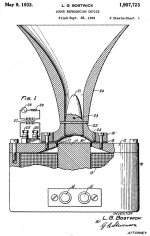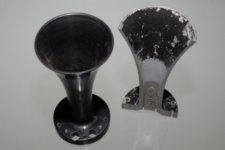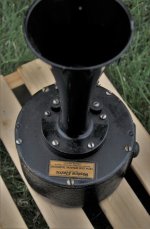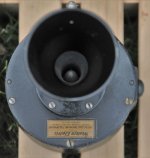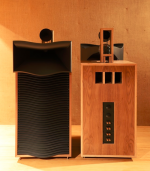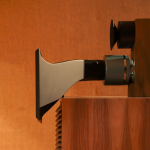Gentlemen,
Just want to say that I really regret the direction this thread has moved .
Thread no. 421 discussing audibillity of distorion with again dr Geddes ( with all respect) making the same statements he has been making for the last 10 years on this forum ( I dont care if they are valid or not, just getting so tired of this dicussion)..
Please continue this dicussion on of the many threads already sacrificed on this topic, and return to the real inspiring stuff that was going on before!
Sorry for the rant, I truly respect you all, keep up tje good work!
Kees
Just want to say that I really regret the direction this thread has moved .
Thread no. 421 discussing audibillity of distorion with again dr Geddes ( with all respect) making the same statements he has been making for the last 10 years on this forum ( I dont care if they are valid or not, just getting so tired of this dicussion)..
Please continue this dicussion on of the many threads already sacrificed on this topic, and return to the real inspiring stuff that was going on before!
Sorry for the rant, I truly respect you all, keep up tje good work!
Kees
Still, someone did ....

//
It's funny that you referred to the Vox Olympian, because that trumpet also occurred to me while composing the profile.
However, it is different, actually a straight-walled (conical) pipe, with hardly any mouth termination. At least, that's how it looks from the outside.
The cast bronze LV trumpet (+ TAD 2002) is supposed to provide a kind of diffusion-layer between the Vitavox S2 + R300W and the TAD ET 703 supertweeter.
'My trumpet' is somewhat similar to the WE 597A Bostwick tweeter, although the latter features a forward-radiating diaphragm and a bullet-shaped phase plug.
Btw, the asking price for the single 597A in the last 2 photos was $ 32,000.00.
Attachments
Last edited:
There would be so much more to show and explore, I just don't have the time for all of it. I'm glad I can at least learn something interesting in the meantime - the thing about PDF and nonlinearity certainly catched my attention as I've never thought about that way.
BTW, the bronze cannon in the design above covers the range 5 - 18 kHz, according to specs. The game is called catch your high frequencies.
BTW, the bronze cannon in the design above covers the range 5 - 18 kHz, according to specs. The game is called catch your high frequencies.
Why do you think so? Still looks like a disaster to me.For 1/5 of the price of the Vox Olympian, this seems a more sensible approach.
It's a simpler design, actually not that different from a JBL 4365/67, except that the LF-section is horn-loaded.
With the Vox Olympian you'll need to buy the gigantic $180,000 Elysian subs (which are lab horns in disguise) in order to have decent bass.
Besides, I think that double tweeter solution is expensive overkill.
With the Vox Olympian you'll need to buy the gigantic $180,000 Elysian subs (which are lab horns in disguise) in order to have decent bass.
Besides, I think that double tweeter solution is expensive overkill.
Last edited:
I can hear the 'horn honk' all the way from Germany[/QUOTE said:Yeah, it's called a saxofone
Humanity might not be ready to ignore distorsion just yet. Certainly not audio heads. Still it's a linearity deficiency. If you could reduce them with a snap of a finger - would you still not bother?
//
Archimago's Musings: BLIND TEST RESULTS Part I: "Is high Harmonic Distortion in music audible?" Procedures & Settings
Archimago's Musings: BLIND TEST RESULTS Part II: "Is high Harmonic Distortion in music audible?" Respondent Results
Sorry... ;-)
//
"Is high Harmonic Distortion in music audible?"
Isn't this a bit silly question? Of course it will be audible, if high enough. The real and sensible question is whether it is common to have audible nonlinear distortion in loudspeaker drivers not pushed beyond their limits.
Isn't this a bit silly question? Of course it will be audible, if high enough. The real and sensible question is whether it is common to have audible nonlinear distortion in loudspeaker drivers not pushed beyond their limits.
"Is high Harmonic Distortion in music audible?"
Isn't this a bit silly question? Of course it will be audible, if high enough. The real and sensible question is whether it is common to have audible nonlinear distortion in loudspeaker drivers not pushed beyond their limits.
It is very common to have quite significant amounts of several different types of distortion in drivers.
Yes, one might say this is a possibility, but hardly the only hypothesis that one could make. Perhaps the skew and kurtosis of a signal makes the frequency response aberrations more apparent. Nothing nonlinear about that. It's probably a blend of both, an interesting study, but at this point it could be either way.
If you haven't realized it yet, the PDF (Probability Density Function) differences between the input and output will define the system nonlinearities to the extent the signal excites them - mostly level.
I can not see how probability density should apply to a causal system. Would you care to enlighten me on that?
Thinking again about compression chambers in compression drivers, I'm wondering if applying a coat of velvet powder to the phase-plug wall facing the diaphragm could have a positive effect. Hasn't anyone experimented with something like that?
I know there is a patent, I can not recall who's patent it is, that uses an area with resistive damping on the back of the phase plug (facing the driver). As I recall, it was centered in the middle of the phase plug. I did not read the patent that well as it struck me that it could not improve much on the reactive nature of the phase plug, and therefore effectively only blinds off a section of the diaphragm. For a dome that will off course affect the impact of modal frequencies slightly, but it seems like a kind of Vinnie The Poh-bandage on a broken leg.
Personally, I ignore even harmonics and look for H3 and H5. Beyma used to include distortion plots in their specification sheets, often of the same driver mounted on 2 different horns.
mabat, 'request' profile attached.
Many will argue that 2. order is slightly more audible on average than 3. order. It will off course also depend on phase and other conditions, but both of them are also often a significant contributor to intermodulation distortion, but in a slightly different way. My personal experience is that 2. order tends to add a bit of brightness that is often not as pronounced with 3. order harmonics overtones.
I have ordered some velvet powder (as they call it - also known as flocking) so I will report back. I can imagine it could perhaps dampen the interior resonances a bit, which can be quite severe on high frequencies, based on the simulations. It would cost next to nothing.
Remember I still intend to make a spherical wave phase plug...
Remember I still intend to make a spherical wave phase plug...
Last edited:
Spherical wave is the perfect match for a conical waveguide, allowing for constant directivity up to an arbitrarily high frequency, at least in theory. With planar wave you are limited by higher order modes as they "cut in". It certainly is a good place to start, just not the best possible solution.
Last edited:
I believe that depends on wether you have a transition between the throat and the conical section or not. Some guys in Norway got this to work with extremely good results. They have 500-20k with a near perfect polar from a 112cm horn (yes, that is big). It also has very weak modes, a bit like JMLC, but does not load all that much at low frequencies as the opening angle is quite wide.
- Home
- Loudspeakers
- Multi-Way
- Acoustic Horn Design – The Easy Way (Ath4)
